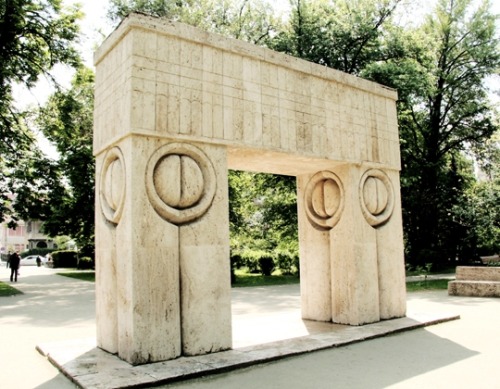my-romania: Constantin Brâncuși - “Work like a slave, command like a king, create l
my-romania: Constantin Brâncuși - “Work like a slave, command like a king, create like a god.” Constantin Brâncuși (February 19, 1876 – March 16, 1957) was a Romanian sculptor, painter and photographer who made his career in France. Considered a pioneer of modernism, one of the most influential sculptors of the 20th-century, Brâncuși is called the patriarch of modern sculpture. As a child he displayed an aptitude for carving wooden farm tools. Formal studies took him first to Bucharest, then to Munich, then to the École des Beaux-Arts in Paris from 1905 to 1907. His art emphasizes clean geometrical lines that balance forms inherent in his materials with the symbolic allusions of representational art. Brâncuși sought inspiration in non-European cultures as a source of primitive exoticism, but other influences emerge from Romanian folk art traceable through Byzantine and Dionysian traditions. Brâncuși always dressed in the simple ways the Romanian peasants did. His studio was reminiscent of the houses of the peasants from his native region: there was a big slab of rock as a table and a primitive fireplace, similar to those found in traditional houses in his native Oltenia, while the rest of the furniture was made by him out of wood. Brâncuși would cook his own food, traditional Romanian dishes, with which he would treat his guests. Brâncuși held a large spectrum of interests, from science to music. He was a good violinist and he would sing old Romanian folk songs, often expressing by them his feelings of homesickness. After the installment of communism, he never considered moving back to his native Romania, but he did visit it eight times. Brâncuși died on March 16, 1957, aged 81. He was buried in the Cimetière du Montparnasse in Paris. This cemetery also displays statues that Brâncuși carved for deceased artists. At his death Brâncuși left 1200 photographs and 215 sculptures. He bequeathed part of his collection to the French state, after it was refused by the Romanian Communist government, on condition that his workshop be rebuilt as it was on the day he died. This reconstruction of his studio, adjacent to the Pompidou Centre, is open to the public. Brâncuși’s works are housed in the National Museum of Art of Romania (Bucharest), the Museum of Modern Art (New York) and other museums around the world. The Philadelphia Museum of Art holds the largest collection of Brâncuși sculptures in the United States. Representative works (as shown in the above photos): The Gate of Kiss, Mademoiselle Pogany, The Table of Silence, The Endless Column; -- source link
Tumblr Blog : www.tumblr.com




